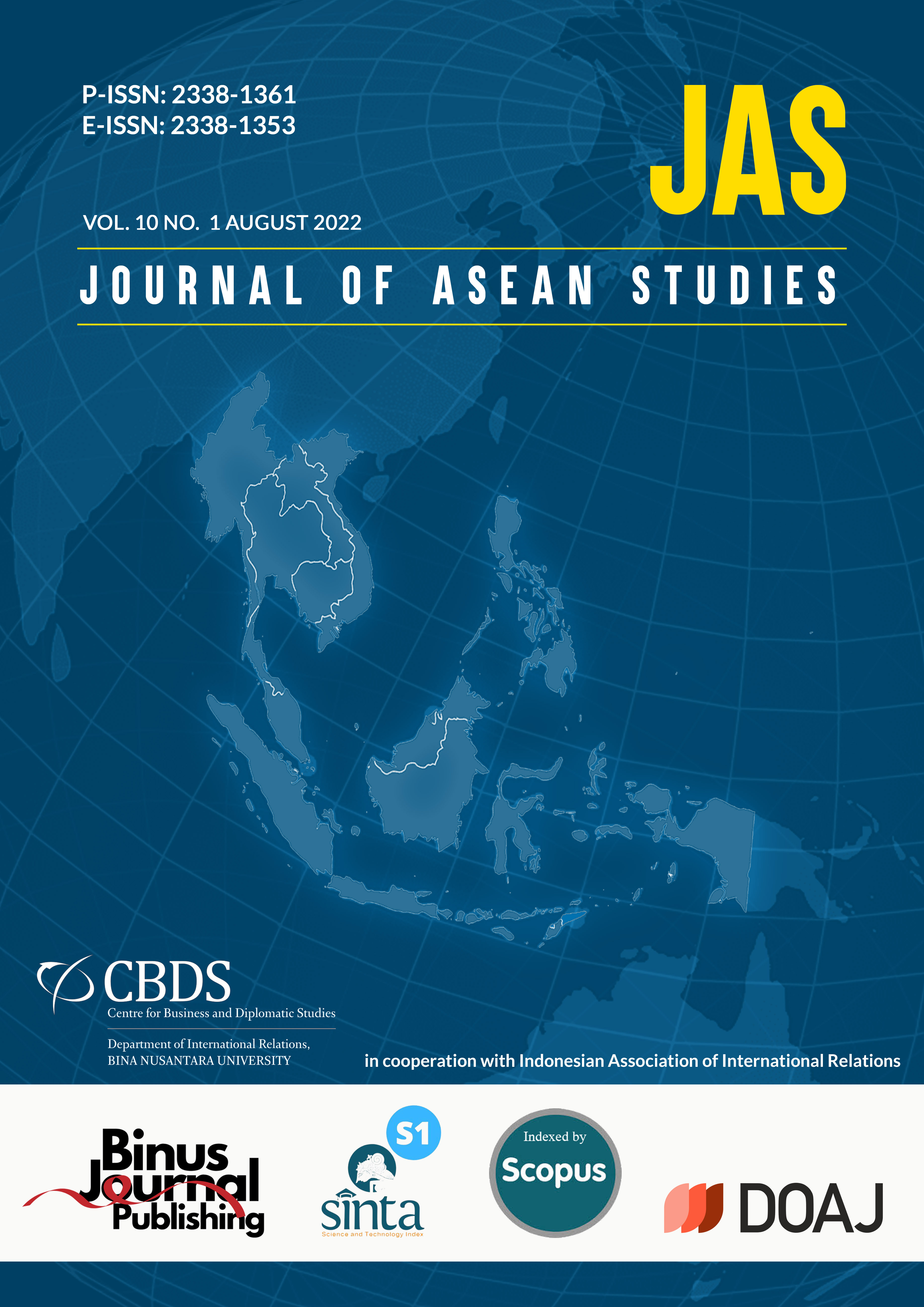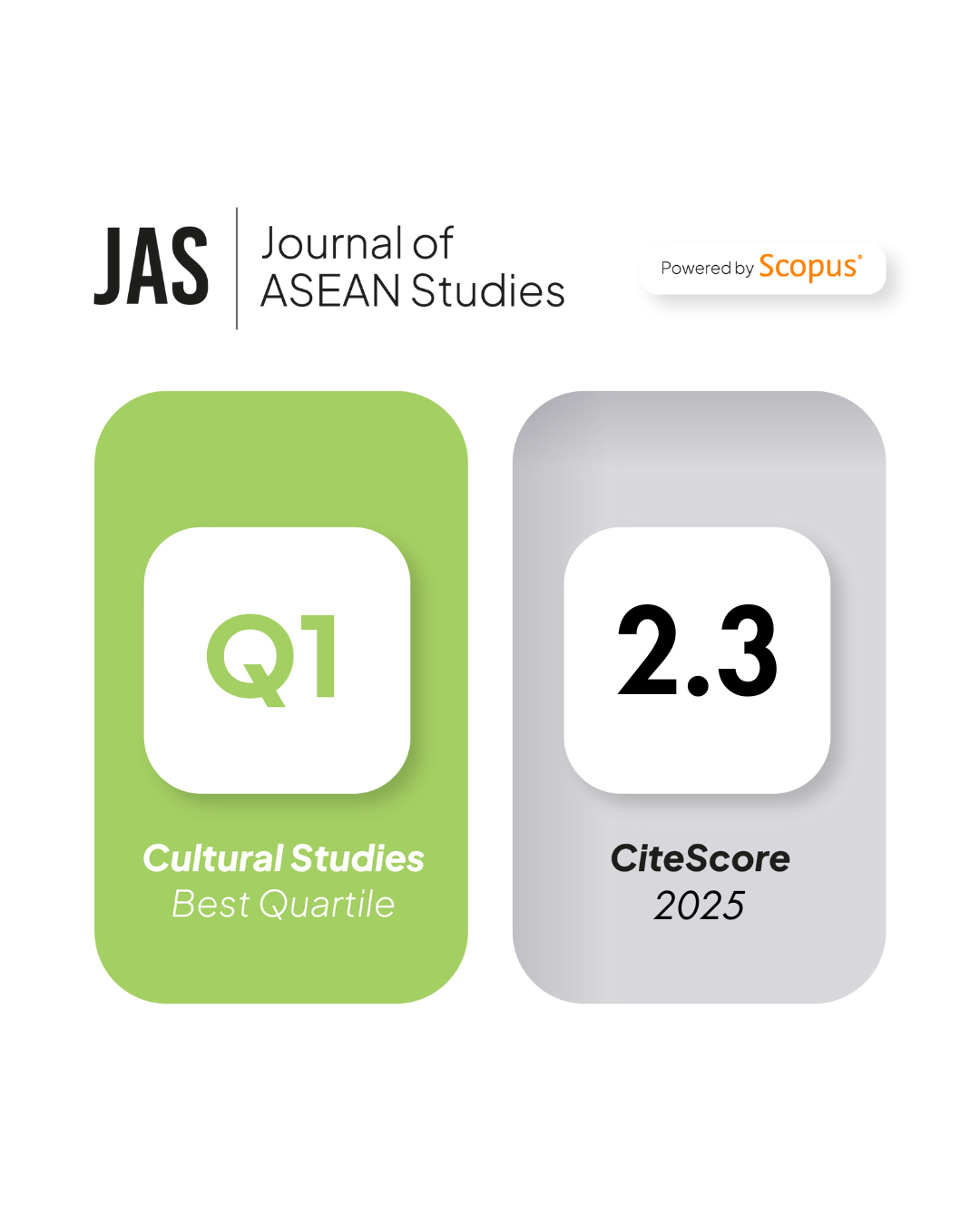Enhancing Social Integration through Intra-ASEAN Travel
DOI:
https://doi.org/10.21512/jas.v10i1.6929Keywords:
Social Integration, ASEAN Economic Community, intra-ASEAN travel, regional tourismAbstract
The ASEAN Economic Community (AEC) was established in 2015 with the goal of enhancing regional integration, including social integration, which has been linked to the ASEAN populace's motivations for regional travel. This paper examines emerging intra-ASEAN travel using Esser's (2001) social integration dimension theory. To fully comprehend the vision of social integration and sustainable tourism development, continuous efforts must be made to develop, promote, and protect the member states' common interests through ASEAN integration. This study aims to assess whether the social integration dimension connects individuals in preference to travelling within the ASEAN region. A questionnaire survey of ASEAN nationality passengers at Malaysia's KLIA2 Airport was used to collect the data. The study findings will present social integration arising from intra-ASEAN travellers and the benefits of promoting tourism for economic stability in the region.
References
Akgüç, M., Beblavý, M. & Simonelli, F. (2018). Low-cost airlines: Bringing the EU closer together, 15 May 2018. CEPS Research Report. [Online]. https://www.ceps.eu/ceps-publications/low-cost-airlines-bringing-eu-closer-together/
Abeyratne, R. (2014). Immunities and privileges of international organizations and the international civil service. Journal of Public Administration and Policy Research, 6(3), 34-43.
Benitez, J., Henseler, J., Castillo, A., & Schuberth, F. (2019). How to perform and report an impactful analysis using partial least squares: Guidelines for confirmatory and explanatory IS research. Information & Management, 57(2). https://doi.org/10.1016/j.im.2019.05.003
Burnazoglu, M. (2020) Built-in normativity in tailoring identity: the case of the EU skills profile tool for integrating refugees. Journal of Economic Methodology, 27(2), 117-129. https://doi.org/10.1080/1350178X.2019.1680856
Carruthers, R., Dick, M., & Saurkar, A. (2005). Affordability of public Transport in developing countries (Transport Papers series; No. TP-3). World Bank. https://openknowledge.worldbank.org/handle/10986/17408
Chirathivat, S., Kunnamas, N. & Welfens, P.J. (2020). Regional integration in the EU and ASEAN in the period of declining multilateralism and corona shocks. International Economics and Economic Policy, 17, 555–561. https://doi.org/10.1007/s10368-020-00480-4
Chon, K. & Maier, T. A. (2010). Welcome to Hospitality an Introduction (3rd Ed.). New York: Delmar.
Dhesinta, W. S. (2017). Fungsi pengawasan keimigrasian dalam pengendalian radikalisme pasca penerapan kebijakan bebas visa kunjungan. Seminar Nasional Hukum Universitas Negeri Semarang, 3(1), 15-28.
Duroy, Q. (2011). North African identity and racial discrimination in France: A social economic analysis of capability deprivation. Review of Social Economy, 69(3), 307–332. https://doi.org/10.1080/00346764.2010.502834
Dosch, J. (2017). The ASEAN economic community: Deep integration or just political window dressing? TRaNS: Trans-Regional and -National Studies of Southeast Asia, 5(1), 25-47. https://doi.org/10.1017/trn.2016.28
Esser, H. (2001). Integration und Ethnische Schichtung (Working Paper No. 40). Mannheim: Mannheimer Zentrum für Europäische Sozialforschung. http://www.mzes.uni-mannheim.de/publications/wp/wp-40.pdf
Ferguson, C. (2008). Promoting social integration. Report commissioned by the United Nations Department of Economic and Social Affairs (UNDESA) for the Expert Group Meeting. Helsinki, Finland. http://www.gsdrc.org/docs/open/se6.pdf
Hankinson, G. (2004). Relational network brands: Towards a conceptual model of place brands. Journal of Vacation Marketing, 10(2), 109–121. https://doi.org/10.1177/‌‌‌‌135676670401000202
Jones, C. (2019). A value chain approach to support Southeast Asian Economic regionalism. Journal of ASEAN Studies, 7(1), 40. https://doi.org/10.21512/jas.v7i1.5009
Jones, S. L. & Butman, R. E. (2011). The integration of psychology. In Jones, S. L., Butman, R. E. (Eds.), Modern Psychotherapies: A Comprehensive Christian Appraisal (pp. 27–59). Downers Grove, IL: IVP Academic.
Mazumder, M. N. H., Sultana, M. A., & Al-Mamun, A. (2013) Regional tourism development in Southeast Asia. Transnational Corporations Review, 5(2), 60-76. https://doi.org/‌‌‌10.1080/‌‌‌‌‌19186444.2013.11668679
Mittelstädt, A. & Odag, Ö. (2015). Social media use and social integration of ethnic minorities in Germany: A new interdisciplinary framework. Athens Journal of Mass Media and Communications, 2(1), 21-32. https://doi.org/10.30958/ajmmc.2.1.2
Murthy, S. L. (2016). A new constitutive commitment to water. Boston College Journal of Law & Social Justice, 36(2), 159-233.
Oegroseno, A. H. (2013). ASEAN as the most feasible forum to address the South China Sea challenges. Proceedings of the Annual Meeting (American Society of International Law), 107, 290-293. https://doi.org/10.5305/procannmeetasil.107.0290
Permatasari, Y. (2020). Building Indonesia through ASEAN economic community. Journal of ASEAN Studies, 8(1), 81–93. https://doi.org/10.21512/jas.v8i1.6040
Rini, A. D. (2020). Digitalization in the community-based tourism development in peripheral areas: A case study of Sumbermanjing Wetan Village, Malang Regency. Journal of ASEAN Studies, 7(2). https://doi.org/10.21512/jas.v7i2.6115
Lakey, P. (2003). Acculturation: A review of the literature. Intercultural Communication Studies, 12(2), 103-118.
Litman, T. (2013). Transportation and public health. Annual Review of Public Health, 34(1), 217–233. https://doi.org/10.1146/annurev-publhealth-031912-114502
Parikesit, D. & Magribi, L. O. M. (2004). Development of a dynamic model for investigating the interaction between rural transport and development: A case of Southeast Sulawesi, Indonesia. Journal of the Eastern Asia Society for Transportation Studies, 6, 2747-2761.
O'Connell, J. F. & Williams, G. (2005). Passengers' perceptions of lowcost airlines and full service carriers: A case study involving Ryanair, Aer Lingus, Air Asia and Malaysia Airlines. mJournal of Air Transport Management, 11(4), 259-272. https://doi.org/‌10.1016‌/‌j.jairtraman2005.01.007
Onyusheva, I. (2018). Analytical and managerial issues of human capital in conditions of global competitiveness: The case of Kazakhstan. Polish Journal of Management Studies, 16(2),198-209. http://dx.doi.org/10.17512/pjms.2017.16.2.17
Ozturk, M. A. (2010). An exploratory study on measuring educators’ attitudes toward educational research. Educational Research and Reviews, 5(12), 758-769.
Sharif, S. P. & Nia, H. S. (2018). Structural Equation Modeling with AMOS. Tehran: Artin Teb.
Slocum, N., & Langenhove, L. (2003). The meaning of regional integration: Introducing positioning theory in regional integration studies. Journal of European Integration, 26(3), 227-252. https://doi.org/10.1080/0703633042000261625
Smith, J. D. & Warburton, F. (2012). Cambridge IGCSE Travel and Tourism. New Delhi: Cambridge University Press.
Stadler, A. M. (2016). The challenged nation state: How to successfully integrate refugees into German society. [Master Thesis, Uppsala University]. https://www.diva-portal.org/smash/‌‌get/‌diva2:934209/FULLTEXT01.pdf
Tay, C. & Zainul, E. (2017, October 17). ASEAN Open Skies implementation remains slow —IDEAS. The Edge Markets. http://www.theedgemarkets.com/article/asean-open-skiesimplementation-remains-slow-%E2%80%94-ideas
Downloads
Published
How to Cite
Issue
Section
License
Copyright (c) 2022 Gabriella Fardhiyanti, Professor Victor Wee

This work is licensed under a Creative Commons Attribution-NonCommercial 4.0 International License.






















